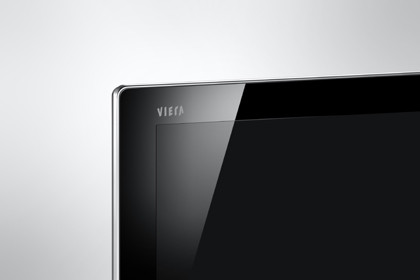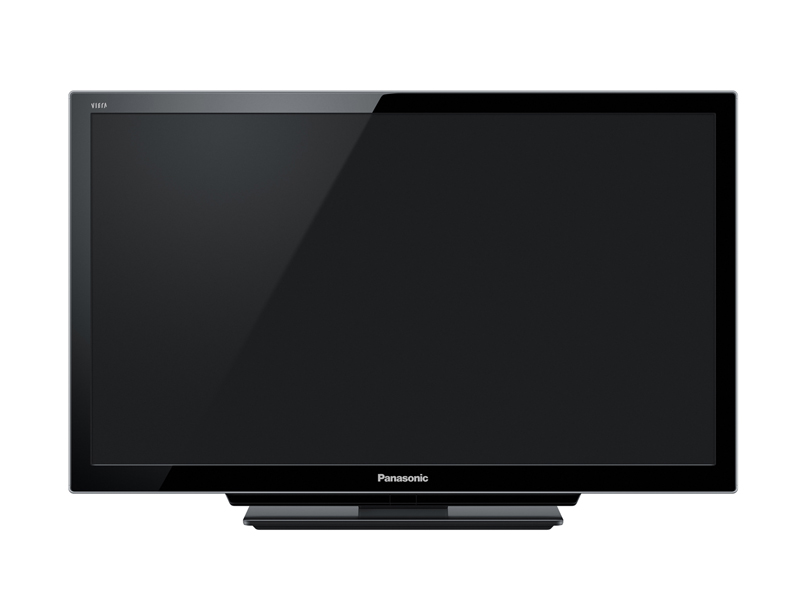Why you can trust TechRadar

Since the TX-L32DT30B is the first LCD 3D TV ever from Panasonic, 3D would seem to be the ideal starting point for the picture quality phase of this review. And actually it's a great place to start, for the TX-L32DT30B delivers the best 3D pictures yet seen on an LCD TV.
The main reason for this bold claim is that its 3D pictures are almost completely free from crosstalk noise. The Golden Gate Bridge sequence in Monsters Vs Aliens is notorious for highlighting crosstalk issues on LCD TVs, yet on the TX-L32DT30B there's nary a trace of the dreaded double ghosting issue.
In fact, running the same sequence through an HDMI splitter into both the TX-L32DT30B and a new Samsung UE46D7000 revealed immediately that the Panasonic model clearly suffers even less with crosstalk than the Samsung, despite the Korean manufacturer having made some strong crosstalk improvements for its 2011 range.
Given that crosstalk is single biggest barrier to becoming fully immersed in a 3D world, there's no overstating how worthwhile Panasonic's efforts at boosting the response time of its 3D LCD TVs have proven.
The TX-L32DT30B also impresses in 3D mode with its colours, which are well-saturated and vibrant – again, more so than those of the Samsung using similar picture settings. The full HD advantage of active 3D is even clear on the TX-L32DT30B's relatively meagre 32-inch screen, especially when it comes to the subtlety with which colour blends are delivered.
The TX-L32DT30B's contrast performance in 3D mode further seems to slightly better Samsung's, though the Samsung 3D picture does manage to score a marked advantage when it comes to shadow detailing, with some darker detail areas getting crushed out of the picture on the Panasonic. Samsung's 2D to 3D conversion also seems slightly cleverer, and certainly delivers a greater sense of depth.
Overall, though, the TX-L32DT30B is as good a 3D LCD TV debut from Panasonic as anyone could possibly have hoped for. The only issue where 3D is concerned is that it's debatable how worthwhile it is having on a 32-inch TV at all. Unless you're going to be sat very close indeed to the screen, having a 3D effect occupying so relatively little of your field of vision arguably makes it feel more like an interesting experience rather than a tool for immersing you more in whatever you're watching.
Sign up for breaking news, reviews, opinion, top tech deals, and more.
Turning to other facets of the TX-L32DT30B's performance, things aren't as uniformly satisfying as they could have been.
Starting with the good stuff, the IPS Alpha panel at the TX-L32DT30B's heart delivers its customary viewing angle benefit, with colour saturations and contrast levels holding up better than those of non-IPS Alpha panels across a wider selection of viewing positions.
There's also an agreeably cinematic and natural look to its colour rendition, avoiding the slightly bluish or yellow-tinged colour palettes often present to some level on LCD TVs.
Two-dimensional HD images are crisp, detailed and as layered as they can be without actually being 3D, meanwhile, which is no mean feat on a screen this small.
Motion is reasonably fluid, startlingly detailed and sharp, so long as you've got the Intelligent Frame Creation system engaged, and, finally, black levels are surprisingly convincing compared with the rather underwhelming efforts of the TX-L37E30B – provided, at least, that you've got the TX-L32DT30B's Area Dimmer Control option switched on.
However, these last two points also introduce a couple of problems. Regarding motion, turning the IFC system off causes the picture to degrade markedly, with much more motion blur and judder. Yet with it on, you sometimes see a few processing-related glitches, especially during standard-definition viewing.
To get the best results overall you should probably leave IFC set to its Mid level for most of the time – but Panasonic should definitely think about taking a leaf out of Samsung's book and allowing you much more control over how its motion processing systems work.
The problem with the Area Dimmer Control, meanwhile, is a familiar one with edge-lit LCD TVs. Namely that while it introduces a quite striking overall improvement in contrast performance (or, more accurately, black level response), it also causes you to lose shadow detail, and generates some pretty overt greyish 'blocks' around bright parts of otherwise dark images.
For instance, if there's white text in the middle of a black screen, you can see a rectangle of greyish light stretching right from top to bottom of the picture over the width occupied by the bright object. Or if there's a bright object in a corner of an otherwise dark image, you can see a sort of triangle of extra brightness around the area occupied by the bright object.
These backlight 'blocking' issues don't crop up often with usually bright normal TV viewing, it has to be said. But they certainly appear while watching films, with their generally more extensive contrast ranges.
So should you just turn the Area Dimming off? Not necessarily, for doing so causes the picture to lose a considerable amount of black level response, leaving dark scenes feeling rather grey and washed out.
Overall you're probably served better by having the Area Dimming feature active, but there's no doubt that the TX-L32DT30B presents you with a choice between two flawed black level options, rather than offering a solution that satisfies on all levels.
The net effect of all the pros and cons discussed so far is that when compared with the 2D performance of this year's other 'headline' TV to date, the Samsung UE46D7000, the latter achieves a more dynamic picture with more detail and effective control in dark areas while the Panasonic gives you warmer and more natural colour tones and slightly better motion detailing.
Current page: Panasonic TX-L32DT30B: Picture quality
Prev Page Panasonic TX-L32DT30B: Features Next Page Panasonic L32DT30B: Sound, value, ease of use
John has been writing about home entertainment technology for more than two decades - an especially impressive feat considering he still claims to only be 35 years old (yeah, right). In that time he’s reviewed hundreds if not thousands of TVs, projectors and speakers, and spent frankly far too long sitting by himself in a dark room.
